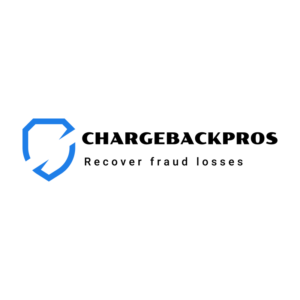Table of Contents
Merchants are becoming more aware of the true cost of chargebacks. E-commerce businesses and other retailers can find their profitability in serious peril if they let an unmanaged chargeback problem fester for too long. It can be challenging to put an accurate price on the labor and overhead expenses you lose out on with each chargeback, but one big part of the final cost is easy to quantify: the chargeback fees.
As if chargebacks weren’t bad enough on their own, every card network tacks additional fees on payment disputes as they work their way through the system. Let’s discuss what these fees are, how much they cost, and what merchants need to know about the financial damage chargeback fees can cause.
How Much Do Chargeback Fees Cost?
Chargeback fees cost between $20 and $100, depending on the merchant’s agreement with their acquirer. When you add these fees up with all the other hidden and indirect costs, companies often lose more than twice the transaction amount for each chargeback.
In addition to the transaction amount and the chargeback fee, chargebacks can also come with many expenses that merchants often don’t think about–or even know exist–until it’s too late:
- Transaction fees – Every time you process a payment, you pay a transaction fee to your payment processor and an interchange fee that goes to the issuing bank. On average, these fees run from 1.5 to 4% per transaction, and if that transaction results in a chargeback, it’s essentially wasted money.
- Operational costs – There’s a lot that goes into processing an order, especially in e-commerce. There’s picking, packing, and shipping it; managing the warehouse and inventory; arranging logistics and transportation; and countless other ways in which employee time is spent making sure customers get what they paid for. These costs typically amount to about 20% of merchant revenue–revenue that’s lost when a charge is reversed.
- Marketing and acquisition costs – Most sales a merchant makes don’t come for free. There’s usually a lot of marketing and advertising dollars put into winning each customer’s business, and many merchants pay full-time sales and marketing teams to do it around the clock. It’s not uncommon for merchants to spend 30 to 40% of their revenue on marketing. Every time a hard-earned sale disappears due to a chargeback, the money spent to get that customer to make a purchase goes down the drain.
As an example, let’s see at what a chargeback on a $100 purchase might look like:
| Transaction value | $100 |
| Transaction fee (4%) | $4 |
| Product costs (23%) | $23 |
| Marketing costs (35%) | $35 |
| Operational costs (20%) | $20 |
| Chargeback fee ($25) | $25 |
| TOTAL | $207 |
In the end, the chargeback doesn’t just mean the loss of $100. In fact, once all the extra expenses and fees are added in, it easily equates to more than double the lost sale: over $200 lost on a $100 transaction.
And this is the norm.
If you, as the merchant, know you’ve met your obligations as the seller–you’ve provided the product, shipped it on time, and delivered on quality and customer care–you shouldn’t have to eat these expenses as a “cost of doing business.” You have the right to fight back, defend your business and recover your financial losses.
Are Chargebacks the Same as Refunds?
Chargebacks aren’t the same as refunds. A refund is voluntarily provided by the merchant, whereas a chargeback is a forced reversal initiated by the issuing bank. Chargebacks also come with additional fees and consequences that refunds don’t have.
When a customer has a complaint, the merchant might give them a full or partial refund, usually in exchange for returning the product. The merchant can initiate a refund through their own system, crediting the customer for the exact purchase price without any extra fees or expenses.
When a customer disputes a charge with their bank and initiates a chargeback, the merchant is hit with these fees before they even know what’s going on.
In many dispute scenarios, the merchant would have been willing to refund the customer if they had been contacted, but the customer for whatever reason never attempted to do so.
Why Do Merchants Get Chargeback Fees?
Chargeback fees exist because managing the chargeback process costs time and money. Charging a fee also gives merchants a significant incentive to try to identify and fix the problems that are causing chargebacks to occur in the first place.
When an issuing bank handles a chargeback, they have to refund the cardholder’s money out of their own funds. This is why the funds are pulled from your acquiring bank: to reimburse the issuing bank.
As the chargeback process is playing out, employees at the banks, card network, and other payment service providers are busy making it all happen, securely moving funds from account to account and handling all the necessary communication and record-keeping. These activities all incur costs, which some of which are passed off to the merchant in the form of chargeback fees.
When a lengthy dispute reaches the arbitration stage, even more fees get charged, because at this point representatives from the card network have to get directly involved. Instead of falling entirely on the merchant, arbitration fees are levied against the losing party in the dispute. However, they can be very expensive, averaging about $500.
Chargebacks Aren’t a Cost of Doing Business
Despite what many merchants believe, chargebacks aren’t just a cost of doing business. They come with serious and significant financial costs–often more than twice the sale price–and they pose a threat to a merchant’s reputation, their bottom line, and their business as a whole.
Fighting them–and better yet, preventing them–needs to be a high priority for all merchants, no matter what industry they’re in.
An important part of preventing and fighting chargebacks is understanding the causes behind them. What reason codes are coming back with each chargeback? What underlying problems do they point to in your sales, marketing, operations, or back offices? What can be done to prevent these issues from occurring in the first place?
To start understanding what’s causing your chargebacks and how you can begin to fight back, check out the Chargebacks 101 eGuide.











